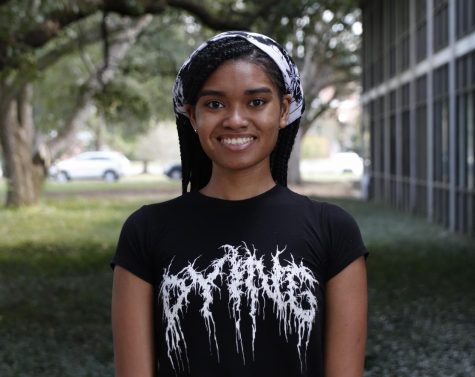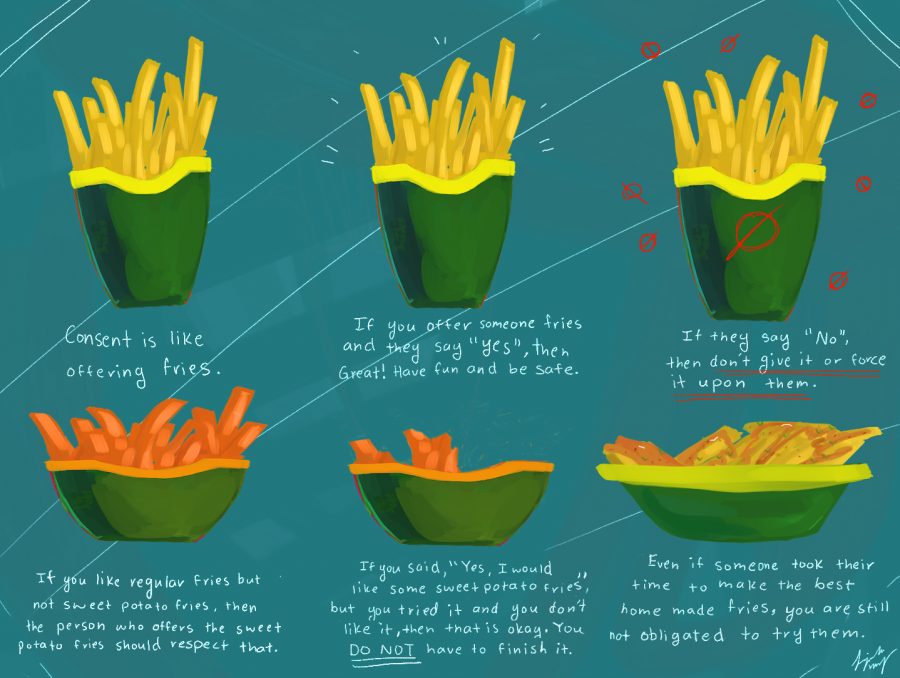Do college students understand consent?
The unfortunate reality of today’s world is that almost everyone has, or knows someone who has, experienced some form of sexual misconduct firsthand.
According to a survey from the Association of American Universities, in 2019, 13% of college students reported that they experienced some form of “non-consensual sexual contact” during their time as a student.
It is likely that even fewer students actually report these crimes, either to the police or another resource their university may offer, so it is difficult to know exactly how many people are affected by sexually-oriented crimes.
The University Police Department’s Annual Security and Fire Safety Report defines a sexual assault as any crime that fits the definition of rape, fondling, incest or statutory rape. Furthermore, a sex offense is considered “any sexual act directed against another person, without the consent of the victim, including instances where the victim is incapable of giving consent.”
The UPD’s provided definitions for rape, fondling and statutory rape all include that the victim of the offense did not give consent to the act.
Considering that consent is a part of all those definitions, it makes me wonder: why aren’t we taught more about what consent actually is?
Yes, all employees are required to acknowledge that they read and understand the university’s Discrimination and Harassment Policy. Yes, freshmen have to attend a Title IX seminar as a part of their SE 101 class. But, in all honesty, that is not enough.
It is one thing to know the difference between sexual harassment and rape. It is another thing entirely to understand consent.
The university provides a definition for consent in its Sexual Misconduct Policy. According to the policy, “Consent is demonstrated through mutually understandable words and/or actions that clearly indicate a willingness to engage in a specific sexual activity.”
However, what is more important than what the university defines as consent is what the university says is not consent.
According to the definition, “Silence alone, without actions evidencing permission, does not demonstrate consent.” If someone is not saying “no,” then they are not saying “yes” either.
However, there are other factors that can weigh in on someone’s decision to say “yes,” such as the influence of drugs or alcohol, peer pressure or fear for one’s personal safety. A “yes” only counts as a valid form of consent as long as saying “no” is also a safe and available option.
In addition to being able to say “no,” consent can be withdrawn at any time by either person involved, no matter how long it has been. Consent is required throughout the duration of whatever happens.
Consent does not take the form of what a person is wearing, how much they were drinking, who they were with or what they have done in the past. Also, being in a relationship is not an automatic substitution for asking for consent.
Since consent is so important, I think it should be emphasized more in any form of required sexual assault awareness/prevention training on college campuses, both for students and for faculty.
I also think people should know how to respond to someone who does not give their consent. They need to understand that they are never entitled to a “yes” from anyone, and they should know how to handle a situation when someone decides they do not want to participate in any form of sexual activity, rather than trying to convince them why they should say “yes.”
Consent is not an option. It is necessary, and people need to know what consent looks like beyond the word “no.”
Your donation will support The Lion's Roar student journalists at Southeastern Louisiana University.
In addition, your contribution will allow us to cover our annual website hosting costs.
No gift is too small.

Maggie Tregre is an English education major from Baton Rouge, LA. She worked as a staff reporter and editor-in-training for The Lion's Roar from September...

Lojuanda Weary is a biological sciences major with a concentration in integrative biology. She is the cartoonist for The Lion's Roar and occasionally draws...


